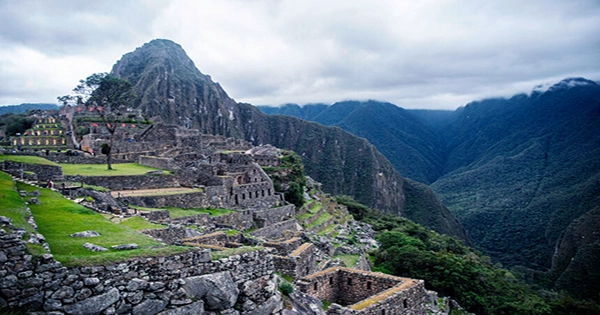Massive icebergs that covered a major portion of North America periodically broke off during the last ice age, dumping rapidly melting ice into the North Atlantic Ocean near Greenland and causing abrupt climate change effects around the world.
These unexpected occurrences, also known as Heinrich Events, took place between 16,000 and 60,000 years ago. They changed the way the oceans throughout the world circulated, causing the North Atlantic to cool and having an effect on global monsoon rains.
However, nothing was known about how the incidents will affect Greenland, which is close by and is regarded to be particularly susceptible to North Atlantic catastrophes. The answer is clear according to a recent study from Oregon State University researchers that was just released in the journal Nature.
“It turns out, nothing happened in Greenland. The temperature just stayed the same,” said the study’s lead author, Kaden Martin, a fourth-year doctoral candidate in OSU’s College of Earth, Ocean, and Atmospheric Sciences. “They had front-row seats to this action but didn’t see the show.”
Instead, the researchers found that these Heinrich events caused rapid warming in Antarctica, at the other end of the globe.
“The researchers anticipated Greenland, in close proximity to the ice sheet, would have experienced some kind of cooling. It is unexpected to see that these Heinrich Events had no noticeable effect on Greenland temperatures, and this finding may have implications for how scientists interpret historical climate dynamics,” said study co-author Christo Buizert, an assistant professor in the College of Earth, Ocean, and Atmospheric Sciences.
There has to be a story that fits all of the evidence, something that connects all the dots. Our discovery adds two new dots; it’s not the full story, and it may not be the main story. It is possible that the Pacific Ocean plays an important role that we haven’t figured out yet.
Professor Christo Buizert
“If anything, our findings raise more questions than answers,” said Buizert, a climate change specialist who uses ice cores from Greenland and Antarctica to reconstruct and understand the Earth’s climate history. “This really changes how we look at these massive events in the North Atlantic. It’s puzzling that far-flung Antarctica responds more strongly than nearby Greenland.”
Drilling and preserving ice cores allows scientists to examine the dust and minuscule air bubbles that have become trapped in the ice over time to learn more about past climatic history. Important records of Earth’s atmospheric variations over hundreds of thousands of years can be found in the ice cores from Greenland and Antarctica.
“Records from ice cores from those regions have served as pillars for scientists’ understanding of past climate events, with ice collected from both locations often telling similar stories,” Martin said.
Martin and Buizert set out to learn more about what was going on in Greenland and Antarctica because it was unclear how the Heinrich Events might affect those regions.
The 1992 core from Greenland’s highest point, where the ice sheet is around 2 miles thick, was taken for the most recent study. The NSF Ice Core Facility in Denver has been keeping the core in storage ever since.
Martin, Buizert, and their colleagues had the chance to reevaluate the core using fresh techniques because of developments in scientific equipment and observations during the previous few decades.
According to the analysis, there were no variations in Greenland’s temperatures during Heinrich Events. However, it also establishes a very direct link between the Heinrich Events and the response in Antarctica.
“When these big iceberg discharges happen in the Arctic, we now know that Antarctica responds right away,” Buizert said. “What happens in one part of the world has an effect on the rest of the world. This inter-hemispheric connection is likely caused by change in global wind patterns.”
“The finding challenges the current understanding of global climate dynamics during these massive events and raises new questions for researchers,” Buizert said. The researchers’ next step is to take the new information and run it through climate models to see if the models can replicate what occurred.
“There has to be a story that fits all of the evidence, something that connects all the dots,” he said. “Our discovery adds two new dots; it’s not the full story, and it may not be the main story. It is possible that the Pacific Ocean plays an important role that we haven’t figured out yet.”
The ultimate goal is to better understand how the climate system is connected and how the components all interact, the researchers said.
“While Heinrich Events are not going to happen in the future, abrupt changes in the globally interconnected climate system will happen again,” Martin said. “Understanding the global dynamics of the climate system can help us better project future impacts and inform how we respond and adapt.”
Additional co-authors are Ed Brook, Jon Edwards, Michael Kalk and Ben Riddell-Young of OSU; Ross Beaudette and Jeffrey Severinghaus of the Scripps Institution of Oceanography; and Todd Sowers of Pennsylvania State University.
The National Science Foundation, the Global Climate Change Foundation and the Gary Comer Science and Education Foundation supported the research.
















